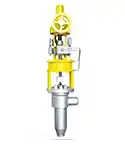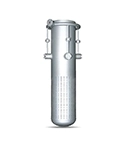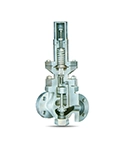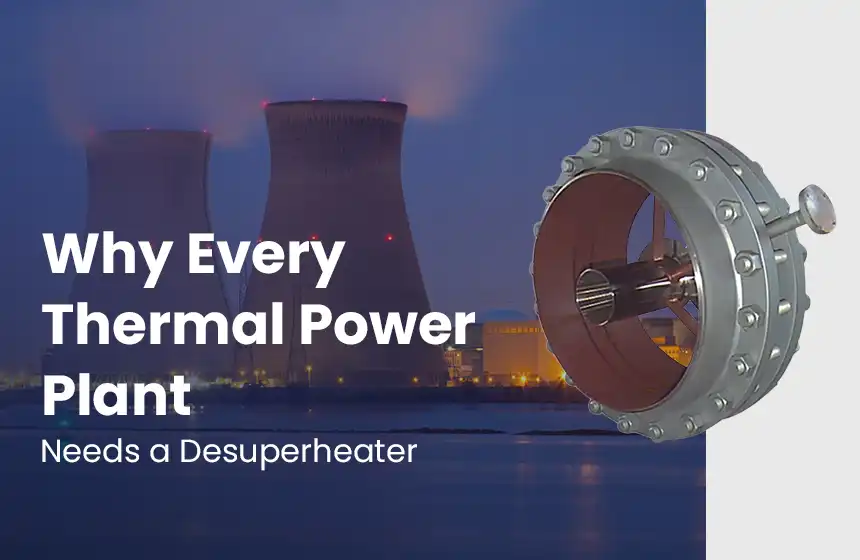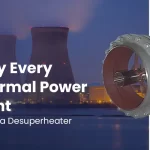
Why Every Thermal Power Plant Needs a Desuperheater
October 6, 2025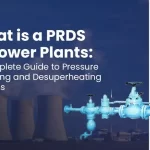
What is a PRDS in Power Plants
November 3, 2025
Why Every Thermal Power Plant Needs a Desuperheater
October 6, 2025
What is a PRDS in Power Plants
November 3, 2025What is PRDS in a Boiler: A Complete Guide to Pressure Reducing and Desuperheating Stations
Generally, in power plants and process industries, steam plays a crucial role in keeping operations running smoothly. Whether it is running turbines, heating systems, or industrial reactors, in every industrial setup, steam is important. However, the question here is how steam pressure and temperature are controlled before they reach the different parts of the plant. Well, in that, PRDS in boiler helps. This blog discusses everything about pressure reducing and desuperheating stations in boilers. So, without further ado, let's get started.
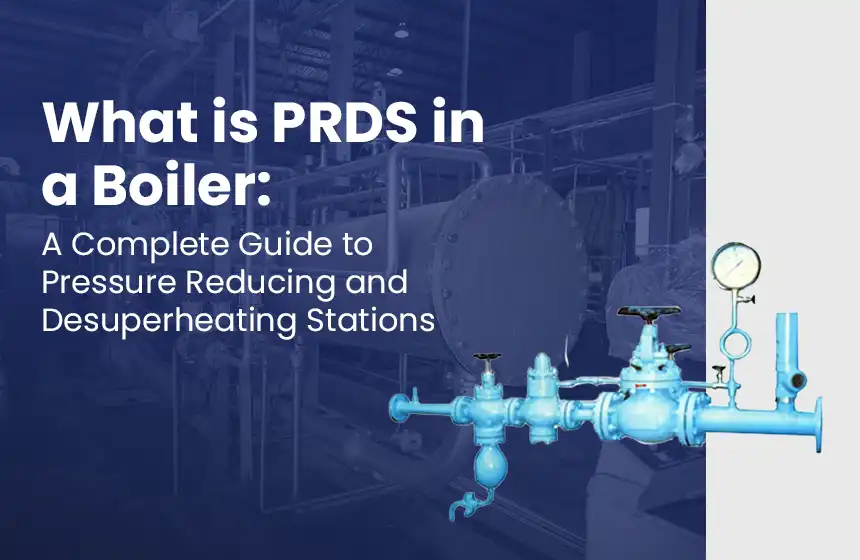
What is PRDS in a Boiler?
The full form of PRDS is Pressure Reducing and Desuperheating Station. It acts as the steam control unit and ensures that the steam leaves the boiler at the right pressure and temperature. It is the system that is specifically designed to reduce the pressure and temperature of high-pressure steam.
Why do We Need PRDS in a Boiler?
Usually, a boiler generates steam at very high pressure and temperature. It is often much higher than what most plant equipment can safely handle. For example, a power plant boiler may produce steam at 100 bar and 540°C, but your heat exchanger might need steam at 10 bar and 180°C. So, if you try to feed such high-pressure steam directly into the equipment, it could damage equipment, cause safety risks, and waste energy. That's the reason industries use pressure reducing and desuperheating stations in boilers to deliver steam at safe and usable conditions while maintaining system efficiency.
How does a PRDS Work?
There are mainly two functions of a PRDS.
1. Pressure reduction
2. Temperature control
Let's understand the process step-by-step.
- The steam from the boiler enters the pressure reducing valve section of the PRDS.
- This valve reduces the steam pressure from boiler levels down to the required level.
- The pressure control is usually done automatic through actuators and control valves. They adjust the valve opening as per demand and system pressure.
- Now, the steam pressure is reduced, but its temperature is still very high.
- Therefore, desuperheating takes place to cool the temperature down.
- In this stage, a fine spray of water is injected into the steam via a desuperheater nozzle.
- The water immediately evaporates, absorbs heat, and lowers the steam temperature to the desired level.
- Finally, you will get low-pressure and low-temperature steam, which is perfect to use in turbines, process heaters, or chemical reactors.
What are the Main Components of a PRDS?
A pressure reducing and desuperheating station in boiler usually includes a pressure reducing valve, desuperheater, control valves and actuators, pressure and temperature sensors, non-return and isolation valves, and condensate drains and steam traps. Let's understand each component's function in brief.
| Component | Function |
|---|---|
| Pressure Reducing Valve | It reduces steam pressure accurately. |
| Desuperheater | Desuperheater controls temperature by spraying water into superheated steam. |
| Control Valves and Actuators | It automatically regulates pressure and temperature based on real-time feedback. |
| Pressure and Temperature Sensors | They constantly monitor process parameters to ensure stability. |
| Non-return and Isolation Valves | It prevents reverse flow and allows safe maintenance. |
| Condensate Drains and Steam Traps | It removes unwanted water and protects equipment. |
What are the Types of PRDS Systems?
According to the design and operations, there are two types of PRDS systems.
1. Single Stage
2. Two Stage
Single-stage PRDS is common in small and medium industries. It reduces pressure and temperature in one unit. Two-stage PRDS is used in large power plants. In this system, steam pressure is reduced in two steps for better control and efficiency.
Want to learn more about boiler systems?
What are the Benefits of Using PRDS in Boilers?
When you use a pressure reducing and desuperheating station in boiler, it provides several benefits to industrial operations.
- It maintains consistent downstream pressure. Therefore, process’s and equipment’s efficiency and performance increase.
- PRDS in boliers prevent pressure surges, so it delivers improved safety. It reduces the equipment damage risk and ensures safe operations in high-pressure systems.
- Smooth and stable steam conditions prevent thermal stress on valves, pipes, and heat exchangers. Therefore, it prevents wear and tear on equipment by offering a longer operational life and reducing the maintenance cost.
- Accurate steam control ensures consistent product quality in industries like paper, textiles, chemicals, and food processing.
- The PRDS in the boiler maintains optimal pressure levels. By doing so, it improves the performance and reliability of industrial processes.
- Often, desuperheating recovers excess heat by converting it into usable steam energy. It minimizes losses.
Where are PRDS Systems Used?
PRDS systems are widely used in various industries where steam plays an important role.
| Industry | Usage |
|---|---|
| Power Plants | Turbine bypass and auxiliary steam supply |
| Chemical and Petrochemical Industries | PRDS is used for process heating |
| Pulp and Paper Mills | It is used for drying and bleaching operations. |
| Textile Plants | The main usage of the PRDS system in textile plants is for fabric processing. |
| Food and Beverage Industries | They are used for sterilization and cooking processes. |
The Way Forward
PRDS in a boiler is just like the brain of the steam system. It ensures the right balance of pressure, temperature, and safety. It helps industries use steam effectively, safely, and cost-effectively.
If you’re looking for the leading pressure reducing and desuperheater station manufacturer, contact Vytal Control. We design, manufacture, and test all components in-house. Therefore, you will get high-quality, proper sizing, and long-lasting performance.
Therefore, whether you operate a power plant, process unit, or refinery, we ensure your systems perform at their best.
FAQ
1. What is PRDS in a Boiler?
PRDS stands for Pressure Reducing and Desuperheating Station. It is a system used in boilers to control both the pressure and temperature of steam. Boilers usually generate steam at high pressure and temperature, but most industrial processes require steam at lower pressure and temperature. PRDS in a boiler helps achieve this by reducing steam pressure and cooling it down to the required level, ensuring safe and efficient use in various applications.
2. Why is PRDS important in a steam system?
PRDS is important because it ensures that steam delivered to different parts of a plant is at the correct pressure and temperature. If steam is too hot or at too high a pressure, it can damage equipment and reduce efficiency. By using PRDS, industries can safely distribute steam for processes like heating, drying, or running turbines — all while maintaining control and improving energy efficiency.
3. How does a PRDS system work?
The PRDS system works in two main steps:
- Pressure Reduction: High-pressure steam from the boiler passes through a control valve that reduces it to the desired pressure.
- Desuperheating: A small amount of cooling water is sprayed into the reduced-pressure steam through a desuperheater, which lowers its temperature to the required level.
This controlled process ensures the steam leaving the PRDS station is at the right pressure and temperature for downstream use.
4. What are the main components of a PRDS system?
A typical PRDS system includes:
- Pressure Reducing Valve (PRV): Reduces steam pressure to the desired level.
- Desuperheater: Cools the steam by spraying water into it.
- Control Valves: Adjust the amount of steam and water flow.
- Temperature and Pressure Sensors: Monitor system conditions.
- Safety Valves and Piping: Ensure safe operation and smooth steam flow.
Each part plays an important role in keeping the system efficient and safe.
5. What is the function of a Desuperheater in PRDS?
The Desuperheater is used to reduce the temperature of superheated steam. It works by injecting fine droplets of cooling water directly into the steam. The water quickly evaporates, bringing down the steam temperature to the required level. This ensures the steam is safe to use in turbines, heat exchangers, or process equipment that require controlled temperatures.
6. What are the advantages of using PRDS in a boiler system?
Using PRDS in a boiler system offers several benefits:
- Better Steam Control: Provides accurate pressure and temperature control.
- Improved Safety: Reduces the risk of high-pressure or high-temperature damage.
- Energy Saving: Optimizes the use of steam energy, reducing waste.
- Versatility: Allows one boiler to serve multiple processes with different steam needs.
- Extended Equipment Life: Protects downstream equipment from wear and tear.
7. Who are leading PRDS manufacturers in India?
Several companies in India design and supply reliable PRDS systems for various industries. Vytal Controls is one of the leading manufacturers known for producing high-quality and durable PRDS solutions. Their systems are designed for accurate performance, easy maintenance, and long-term reliability — ensuring smooth steam regulation across different industrial applications.


